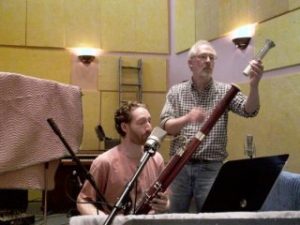My Notes Pop Down
Hi. I just recently started playing bassoon this past summer and I have a problem with my notes popping down when I’m not using the whisper key…what’s my problem?
Answer:
Unstable notes in the second octave is one of the most frustrating problems for beginning bassoonists. Let’s say that is not an easy thing to correct without seeing and hearing what you are doing. It can be the reed, the embouchure, the amount of breath support and air speed as well as problems with the instrument and bocal.
Some of us call this problem “croaking”. It is an inherent problem with the acoustics of the bassoon. The whisper key is not a true octave key, so when you let it off, there is no guarantee that the notes will go up to the desired note or stay there. ( There is a modification to traditional keywork that make a true octave key out of the whisper key if you have an extra $3,000.00 to have it installed. Very few have, but I’m thinking about it.)

